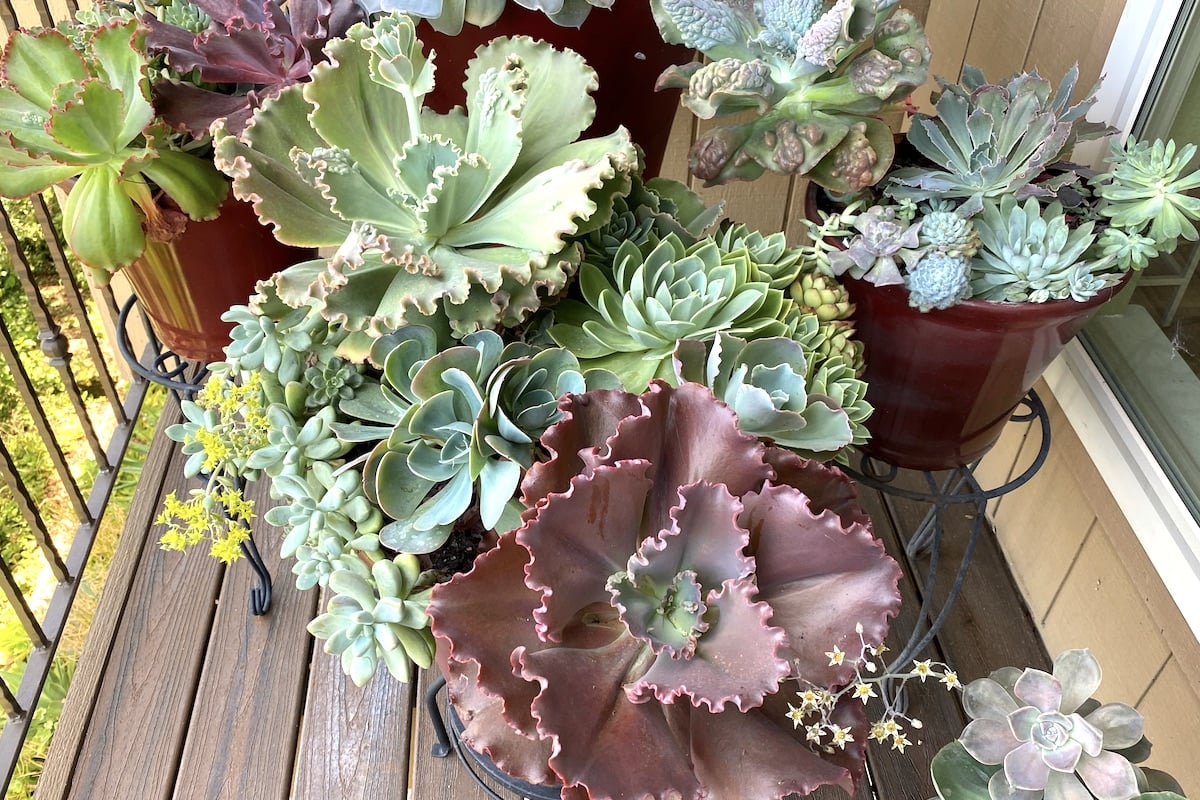Table of Contents
Echeverias are native to semi-arid regions of Mexico and Southern America. They are evergreen, rosette-forming, succulent plants best kept in a hot, sunny spot. Like most fascinating houseplants, Echeverias will thrive even on neglect. In summer, Echeverias impress all with yellow-tipped flowers.
However, the scientific tips on Echeveria care matter a lot as they would assure sustainability and knowledge about conditions to manage the plant with ease. Echeverias are popular for their unique looks and low maintenance. They are fleshy, evergreen leaves and need minimal maintenance. The plump leaves don a variety of colours offering a striking similarity to commonplace flowers.
Echeverias have the capacity to cope well with dry conditions and droughts. One main limitation is Echeverias cannot bear frosty winters and shift to a frost-free place during the winter. Now let us have a quick survey of the variants of Echeverias and the ways and means of their growth and upkeep, emphasising best practices covering Echeveria care.
Growing Conditions for Echeverias and Ways to Care
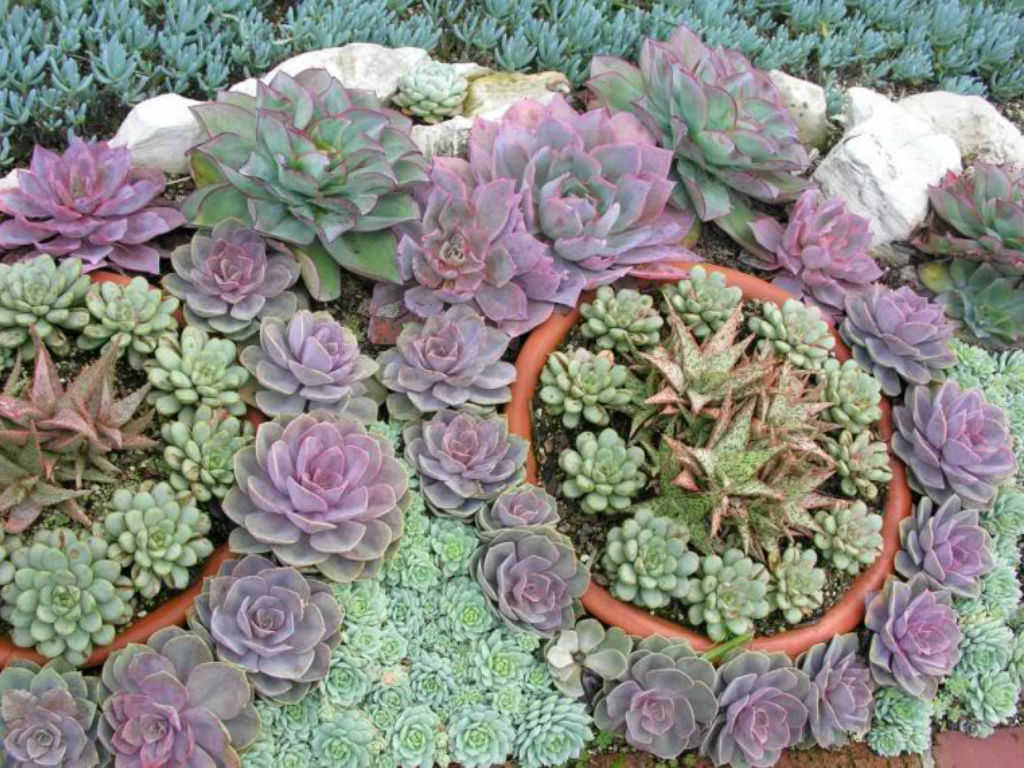
In the run-up to the detailed Echeveria care, a basic awareness of the essential growing conditions of the plant will be useful. Echeveria succulents are members of the Crassulaceae family, and Echeveria care is almost similar to kalanchoe and sedum succulents. Its leaves and stems are fleshy and thick with stored water. Echeverias are well-suited to bright, dry environments making them ideal houseplants. But water logging will cause rot or fungal diseases and destroy the plant. The ideal time for planting Echeverias is springtime. The blooming time is spring and summer. The flower colours include pink, white, yellow, red, and orange,
1. Soil
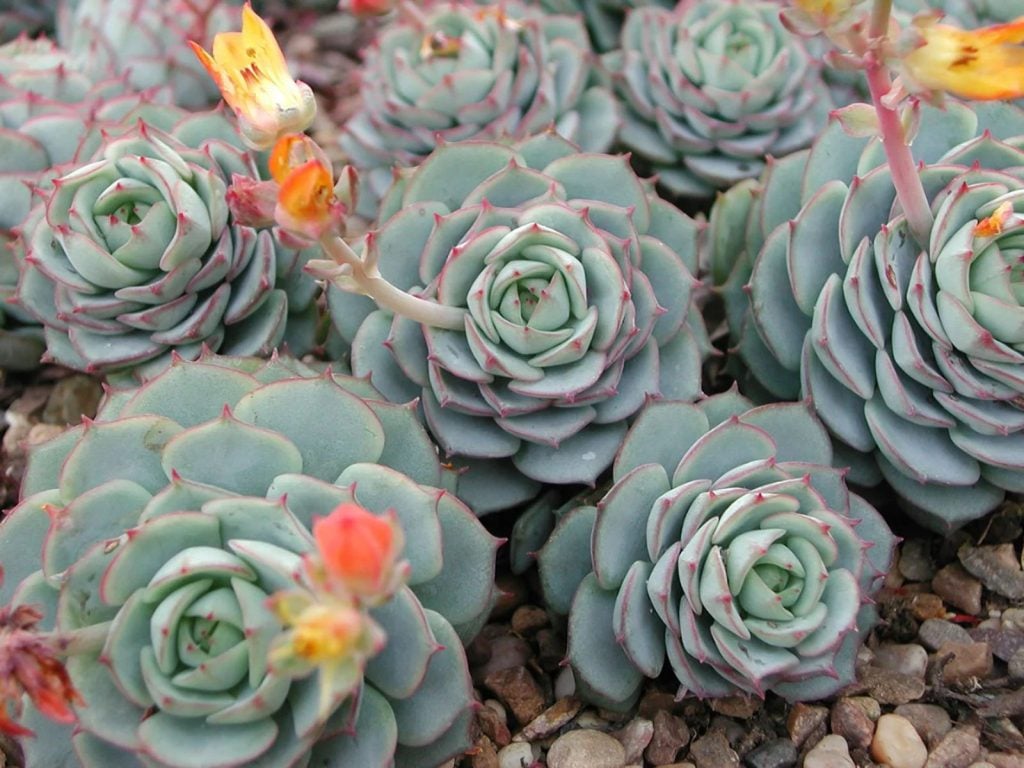
Echeverias thrive in garden beds as best houseplants, provided the soil is well drained and the pH is 6.0 or slightly acidic. Echeverias will require a well-draining, porous pot to keep out excess moisture. You can use standard cactus potting mixes available in most nurseries. A cactus mix can be created by combining three parts of regular potting soil with two parts of coarse sand and one part of perlite.
2. Grow in Unglazed Pots
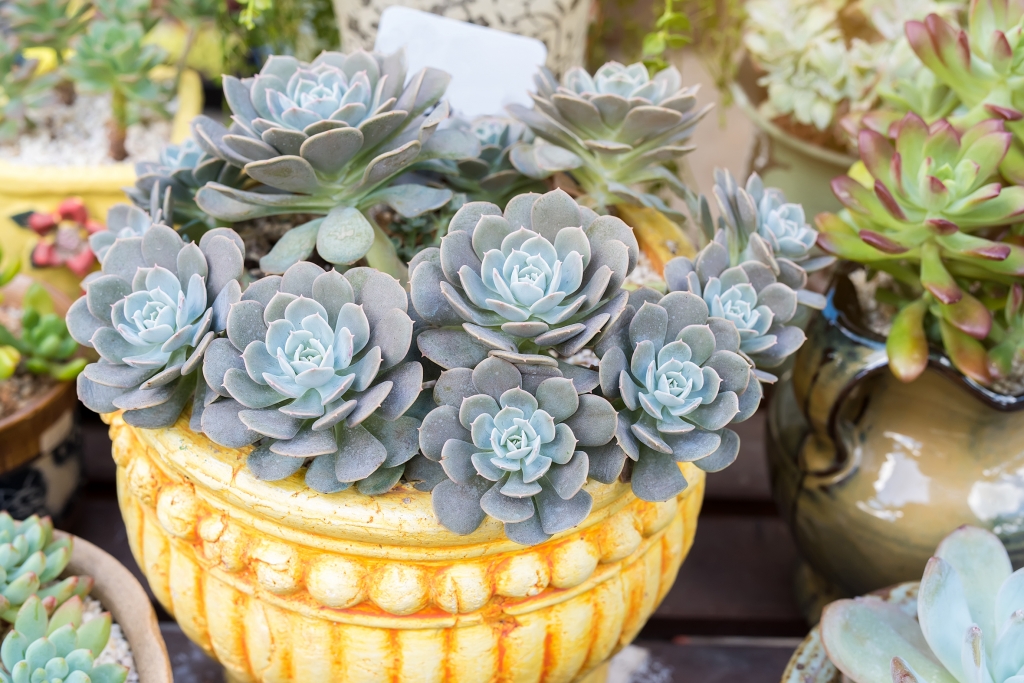
The succulent needs sandy, mildly acidic soil. The roots do not need vast space to deepen and will grow comfortably in small pots. If you can fill the pot with compost and black grit, it will boost the plant’s health. It is good to have an unglazed pot with many drainage holes at the bottom.
Consistent watering is required only for newly planted echeverias if the soil is too dry. The offsets or offshoots produced by Echeverias are good enough to be planted on. You can also create new plants by taking leaf cuttings in spring and summer.
3. Water
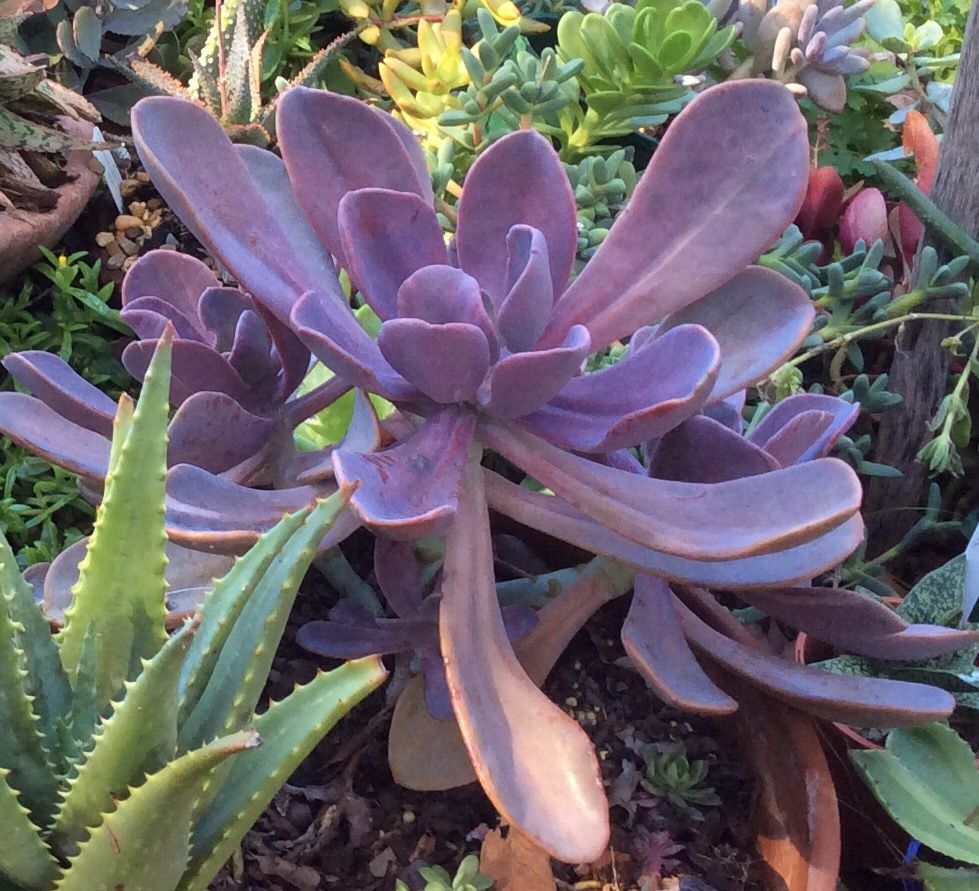
Watering is crucial for proper Echeveria care. It is true Echeverias do not require copious water, but leaving them to dry will be a risk. The wrinkling of leaves must be taken as a signal of the water shortage faced by the plant. One prudent watering method for Echeverias will be to let the soil dry out before watering. Just give a good soaking by the water stream and allow the water to drain out through the pot’s holes. During the prime growth phase, which also depends on the plant size of Echeverias, you have to spare one cup of water once a week. During summers keeping the plant wet will be good. In the winter, minimum watering is fine and will avoid wrinkling of leaves.
4. Light
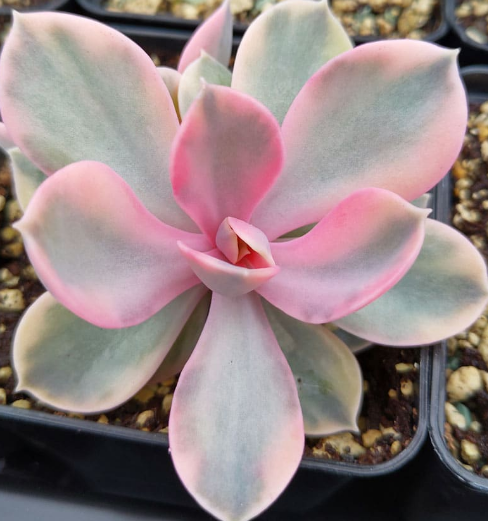
Echeverias require a good amount of light, at least four to five hours of direct sunlight daily. If Echeverias miss the full sun, they turn leggy, and blooms will not happen. So, shift your Echeveria outdoors during the summer to flourish. Also, sudden, intense afternoon sunlight is bad as it causes sunburn, so place the plant in a place where it can receive a bit of shade when the sun is in full blaze.
5. Humidity
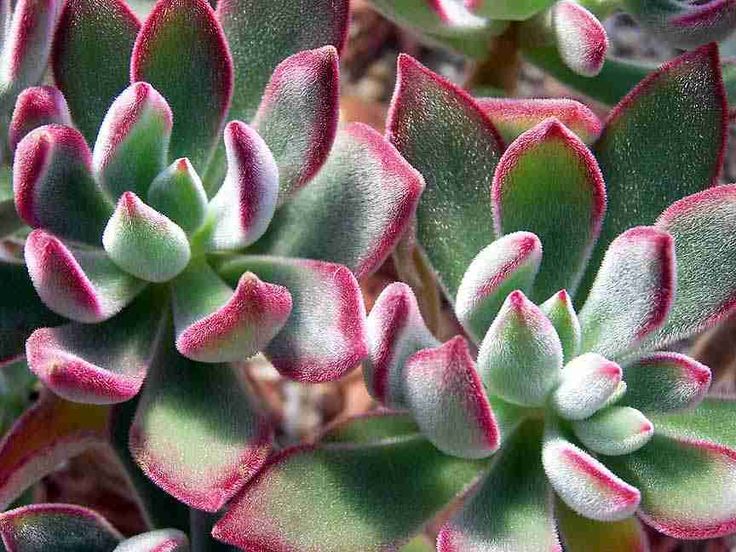
Echeverias will not tolerate extremely cold temperatures. Too much humidity will also lead to root rot. In Echeverias cure, the average room temperature and humidity must be maintained, and avoid too much humid locations like bathrooms or laundry rooms.
6. Fertiliser
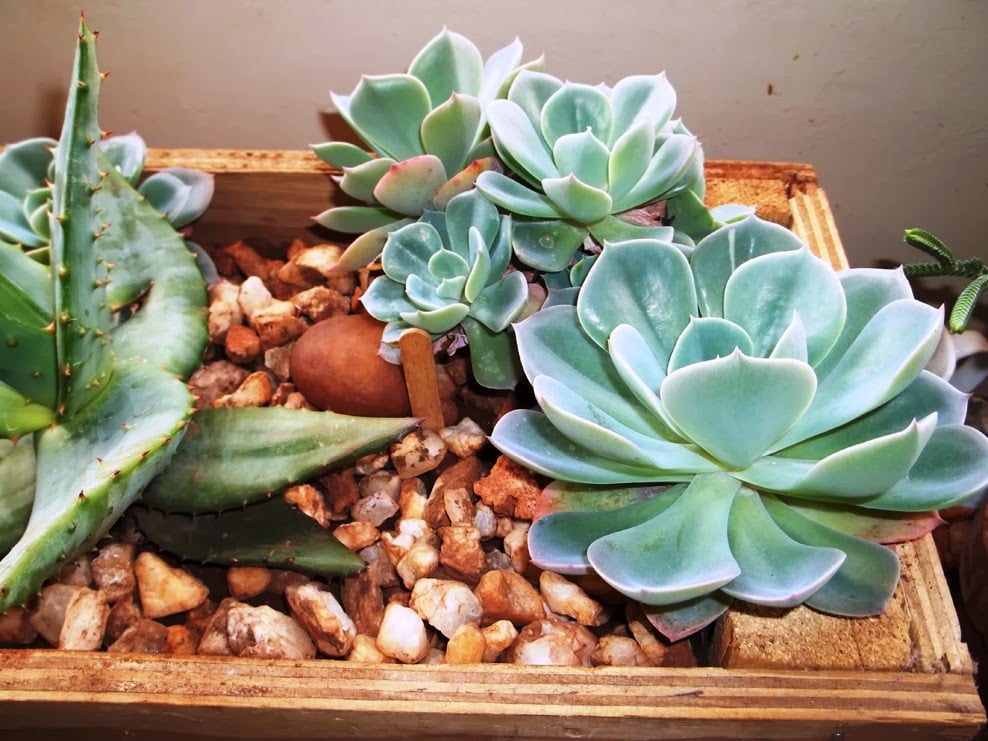
There is no need for adding regular fertiliser for Echeveria as they are accustomed to nutrient-poor soil conditions. Over-fertilising may also cause fertiliser burn. So, occasionally fertilising during spring is the best way for Echeverias to care for the growing period. You can use a balanced 20-20-20 liquid fertiliser diluted many times or cactus and succulent fertilisers for the purpose. For young plants, low-nitrogen fertiliser will be the best.
7. Pruning
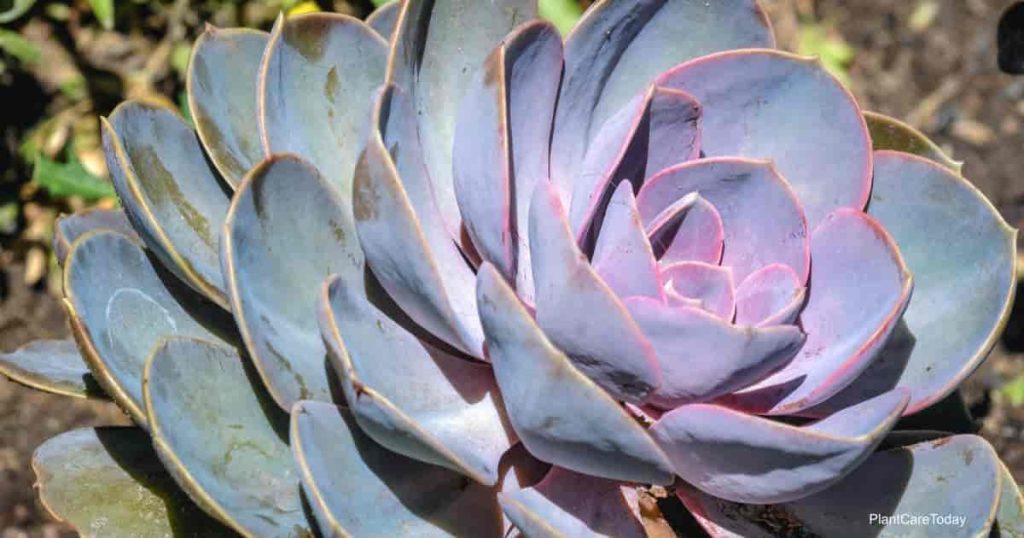
Pruning helps Echeveria from the danger of rotting and expedites its growth. It also adds more life to the plant. Generally, echeverias do not require periodic pruning, but if it becomes too leggy and elongated due to poor sunlight, trim it and make it more attractive. Pruning is usually done at the beginning of their growing season. When the lower leaves dry up and die out, remove those dead leaves with your fingers than letting them rot in a place. Removing old leaves will trigger new growth along the stem.
8. Keep Away from Bugs
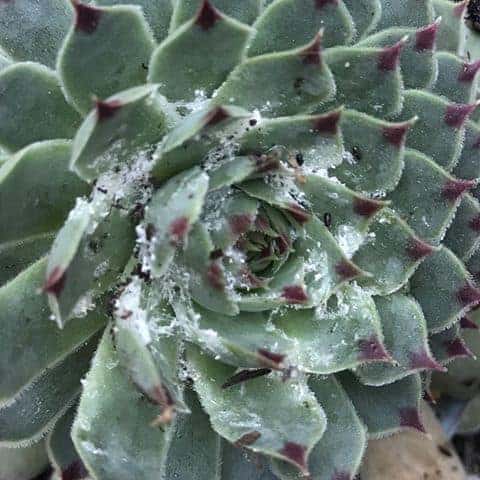
Echeverias are trouble-free if kept dry. However, mealy bugs create problems if Echeverias are grown as house plants. These plant-sucking pests create white spots on the leaves. To solve mealy bugs, keep the succulent away from other house plants.
Periodically wipe the foliage to remove mealy bugs and use an insecticide in the worst cases. Make sure not to overwater plants. Echeverias in wet soil trigger the rotting of roots. After watering, give some time to dry out the soil before watering again. Pruning is not a mandatory condition. You can remove damaged and faded foliage by peeling it off. Faded flowers can be cut. During winter, move the plant to a light and frost-free place.
9. Follow the Best Propagation Methods
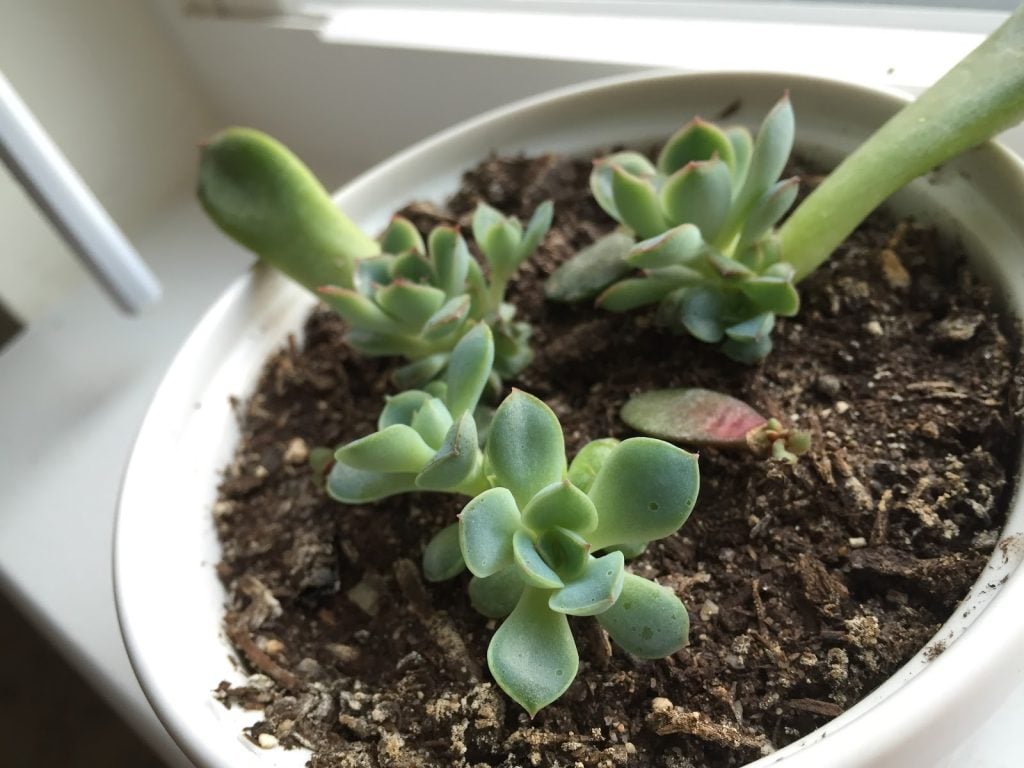
Echeveria plants multiply easily via propagated leaf cuttings, stem cuttings, and offsets. Sowing seeds is another option. Taking cuttings prevents plants from getting leggy. For making cuttings, spring is the best season. For propagating via leaf or stem cutting or offshoots, keep ready a tray, cactus mix, a clear dome, and a plastic bag. The pot must carry ample drainage holes. While cutting stems, use sterilised scissors or pruning snips. Try to propagate more than one leaf to grow into a new plant. In taking a stem cutting, snip off a leggy stem. In taking an offshoot growing off the main stem, snip it off the main branch.
Place the leaf-cutting or offshoot on a tray and let it rest for a few days. Then plant the calloused end in a pot filled with succulent or cacti mix. Cover the pot to let the new plant sprout and add water sparingly to allow it to mature. In a few weeks, a tiny rosette will emerge at the end of the leaf. Do not try to separate the leaf from the rosette, as the succulent gets the nutrients from it. Make the new succulent maximum independent, and allow the old leaf to shrivel and die.
10. Potting and Repotting of Echeveria
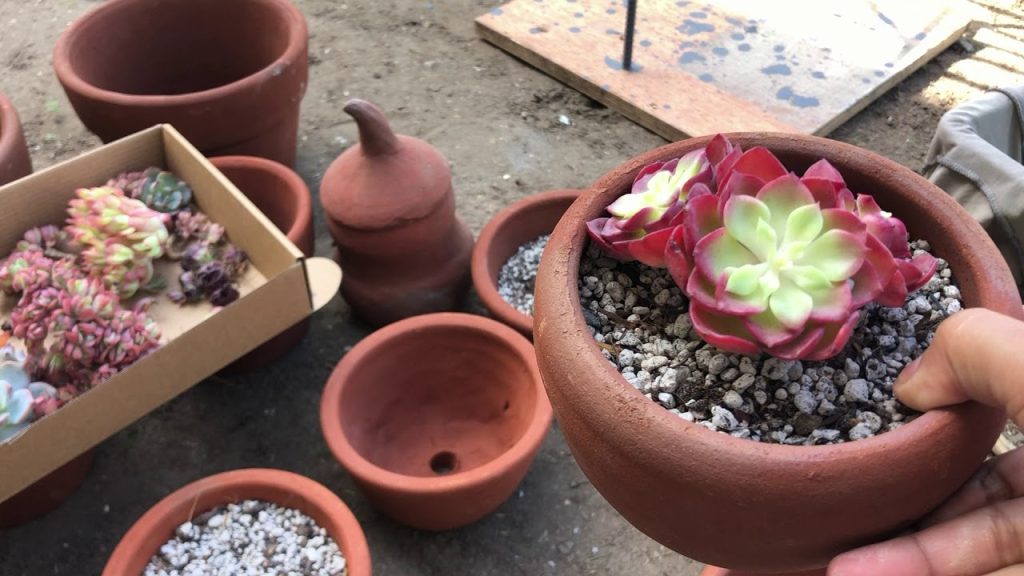
Echeveria will not need too much repotting. It may be repotted once the plant has outgrown the previous container. Repotting in the spring helps the plant to enter an active growth phase. To report an Echeveria plant, ensure the soil is dry. Gently remove the plant from the previous pot.
Carefully remove excess soil from the roots before placing the plant in the new pot. Also, take out all rotted roots in the process. Place the plant in the new pot, backfill it with potting soil, and spread the roots. Treat all cuts with a fungicide. Wait for at least five days before watering to avoid the risk of root rot.
Types of Echeveria
Echeveria thrives well in containers in-house and outside. Although Echeverias appear too tender, they are really tough. Echeverias are spread out among 150 species. A wide pot filled with various Echeveria will make a great visual display. Here are a few important variants of the plant to look at.
1. Ghost Echeveria
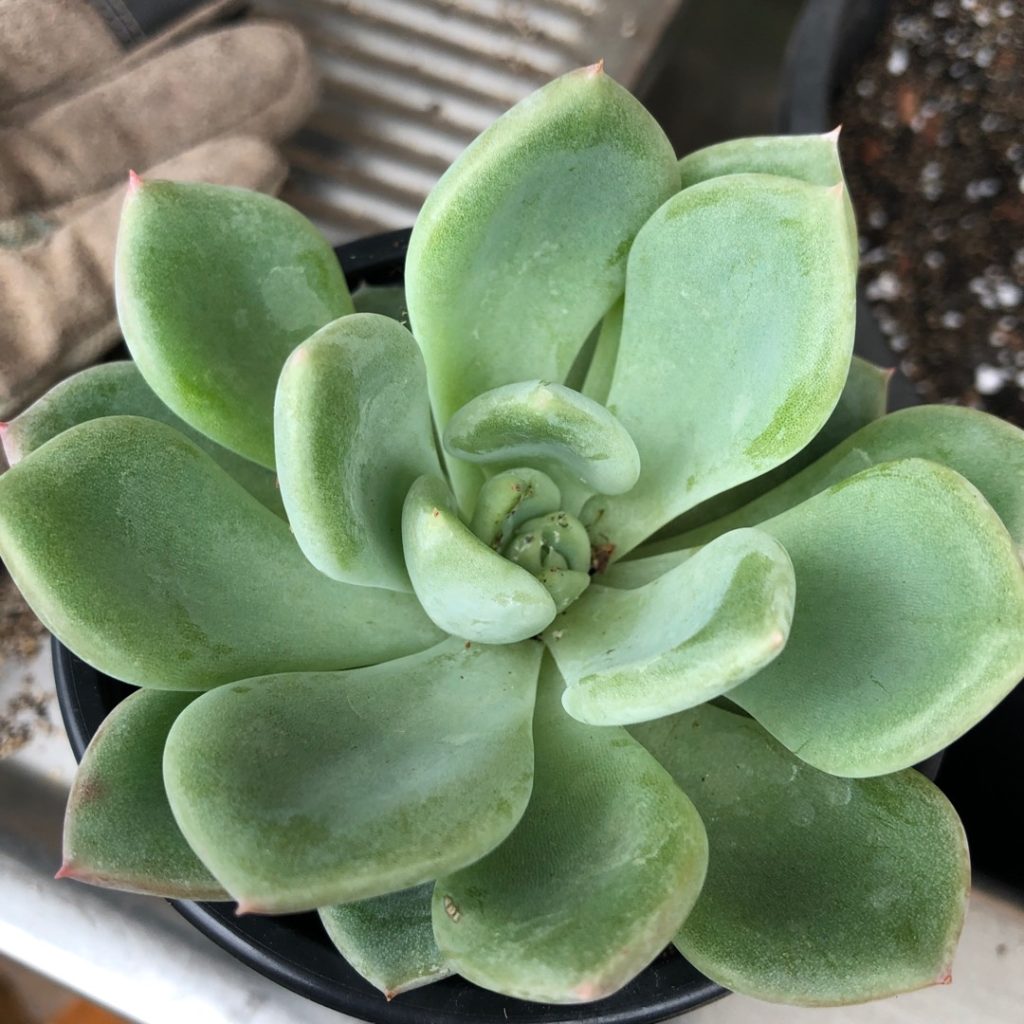
Here the leaves will appear pale, silvery-grey, and fleshy and appear more lilac-coloured in winter months. The plant produces pink or coral lantern-shaped flowers on red stems when it matures.
Mexican snowballs: Commonly known as white Mexican rose or Mexican gem succulent, the plant features thick, fleshy blue-green and silver-green leaves.
Echeveria Lipstick: In this variant, the lime green leaves got pointy red edges, earning the nickname Lipstick. The botanical name is credited to the agave-looking foliage with triangle-shaped leaves.
Echeveria Agavoides – The pale-green leaves carry red tips. By May and June, you will see lantern-shaped flowers with red colour and yellow tips appearing on tall stems capable of growing up to 10 to 12cm.
Echeveria Elegans – It has got large silver leaves as if covered in soft down. Yellow-tipped pink flowers are a speciality in summer.
2. Echeveria Blue Frills
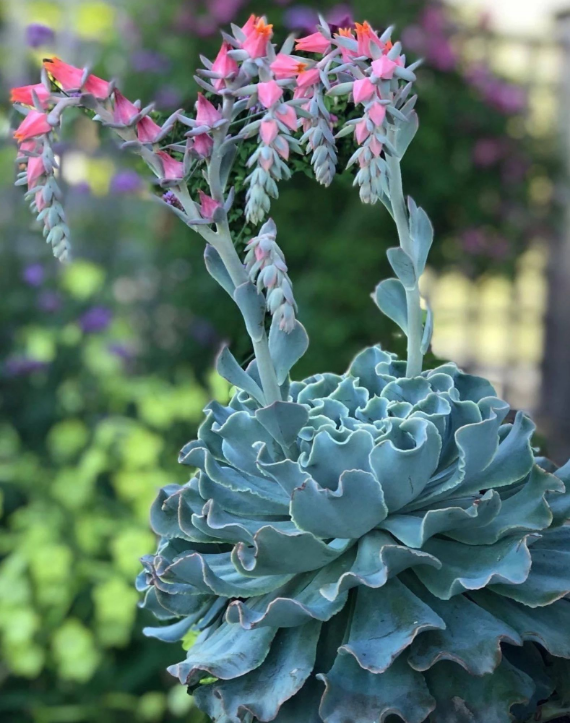
These frill, blue, and green foliage will have a pink edge. The unique part is that this foliage will have no sharp point. The height may extend to 15cm.
Echeveria’ Violet Queen‘ – This variant has silver-green leaves flushed pink on the undersides. In terms of height, it may reach up to 15 cm.
3. Mexican Firecracker
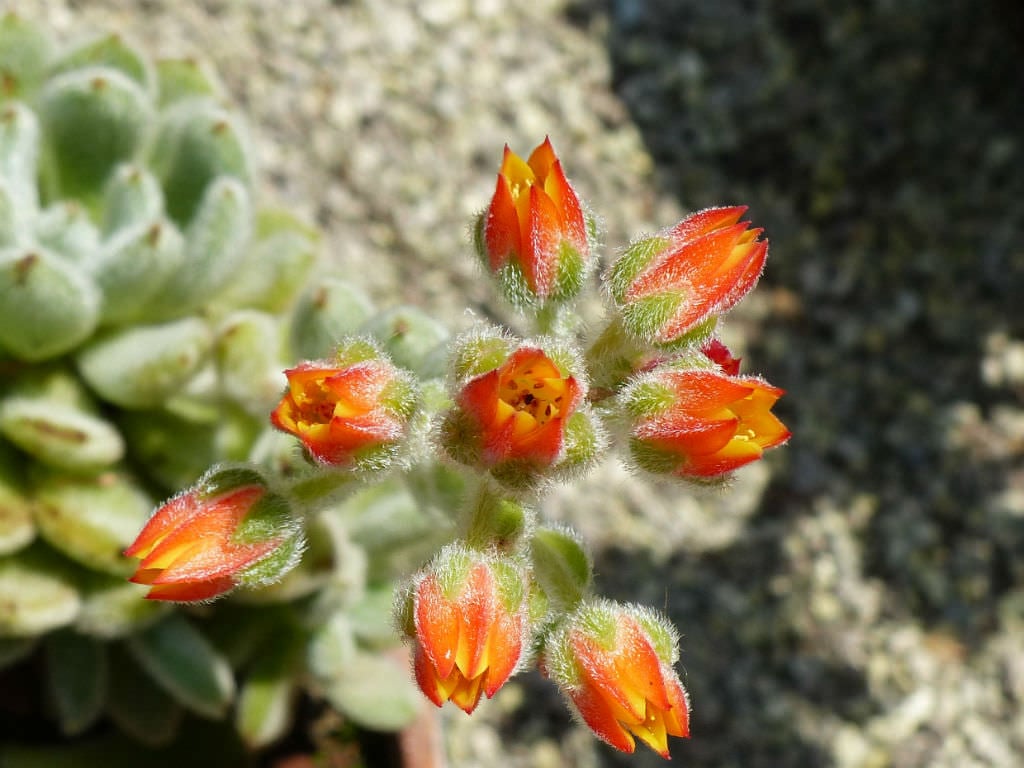
The plant’s scoop-shaped look like a rose, with each leaf covered in tiny, short white hairs, giving a fuzzy appearance. Late spring, mature plants produce foot-long flower stalks with beautiful red firecracker-like urn-shaped flowers with yellow tips.
Health Benefits of Succulents Including Echeveria
In addition to the aesthetics, many succulents like Echeveria have health properties. During photosynthesis, succulents release oxygen absorbing carbon dioxide and keep the air fresh, pure, and clean.
There are also oxygen-producing succulents at night, such as the snake plant Christmas cactus and Aloe Vera. Keeping these succulents in the bedroom will be an extra boost of refreshed air during sleep. The healing properties of succulents come in handy in treating medical problems like stomachaches, cuts, and burns.
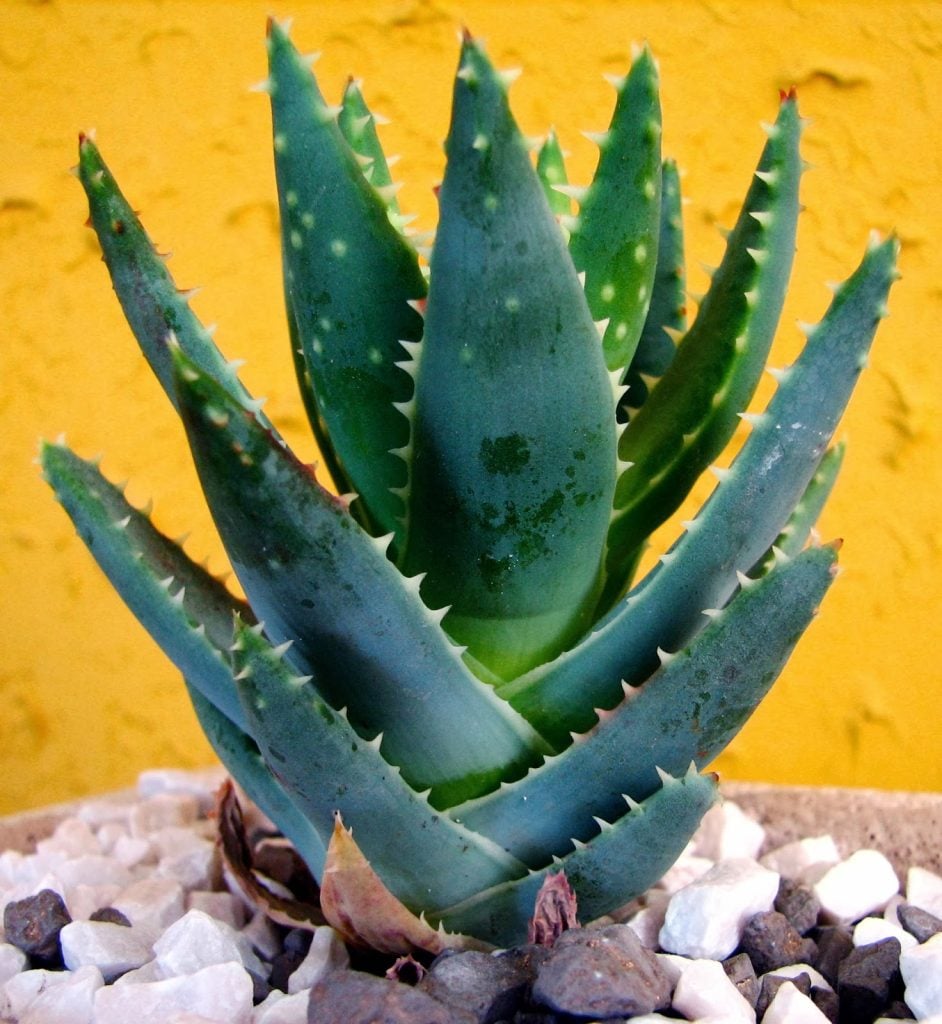
Agave has anti-inflammatory properties and treats cuts and burns. Many would use agave for stomach ulcers, jaundice, and menstrual problems. Aloe vera is known for reducing inflammation, mainly in the digestive tract. Aloe vera gel has many benefits for the skin and is widely used in body lotions and face creams.
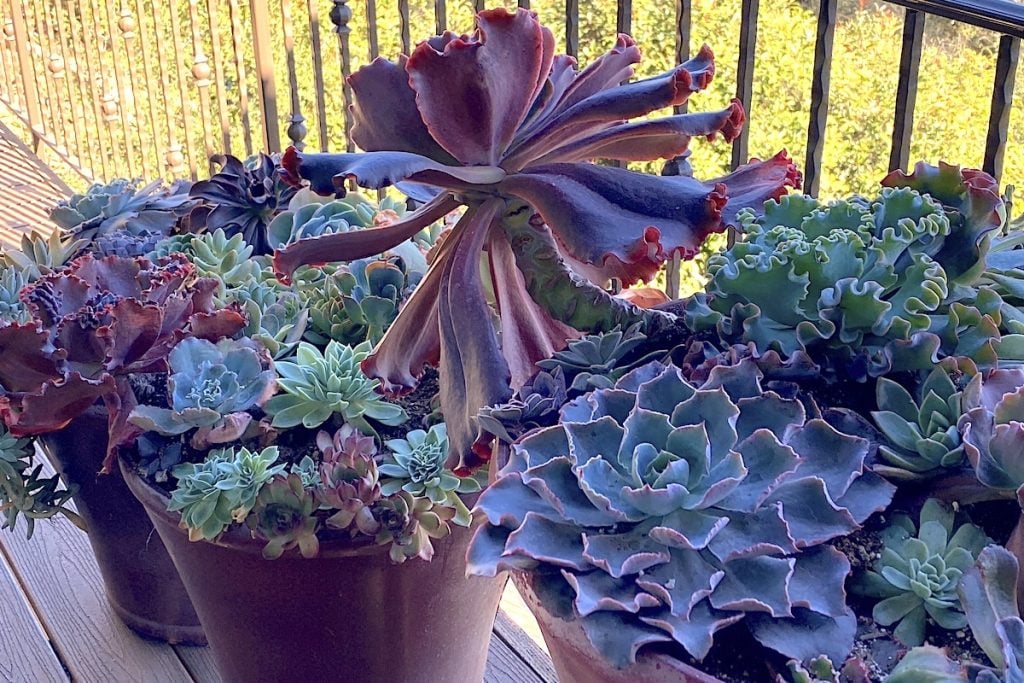
As a much-loved succulent, Echeverias are gorgeous. The right Echeveria care means facilitating enough sunlight and helping it turn beautiful shades of pink, purple, or red. The best part is all these rosette shapes, and chubby leaves will keep you immensely happy as they never stop charming and enchanting you with their unique shapes and colours.
Conclusion
The enthusiasm to encourage the growth of Echeveria in your home garden hinges more on your readiness to address the key requirements of the succulent. The core needs of Echeveria include abundant bright light, proper watering, and packaging in stylish containers to look adorable and timely fertilising for its healthy upkeep.
All these points are part of the discussion here, and you can happily optimise the Echeveria care by taking more from those cues.

